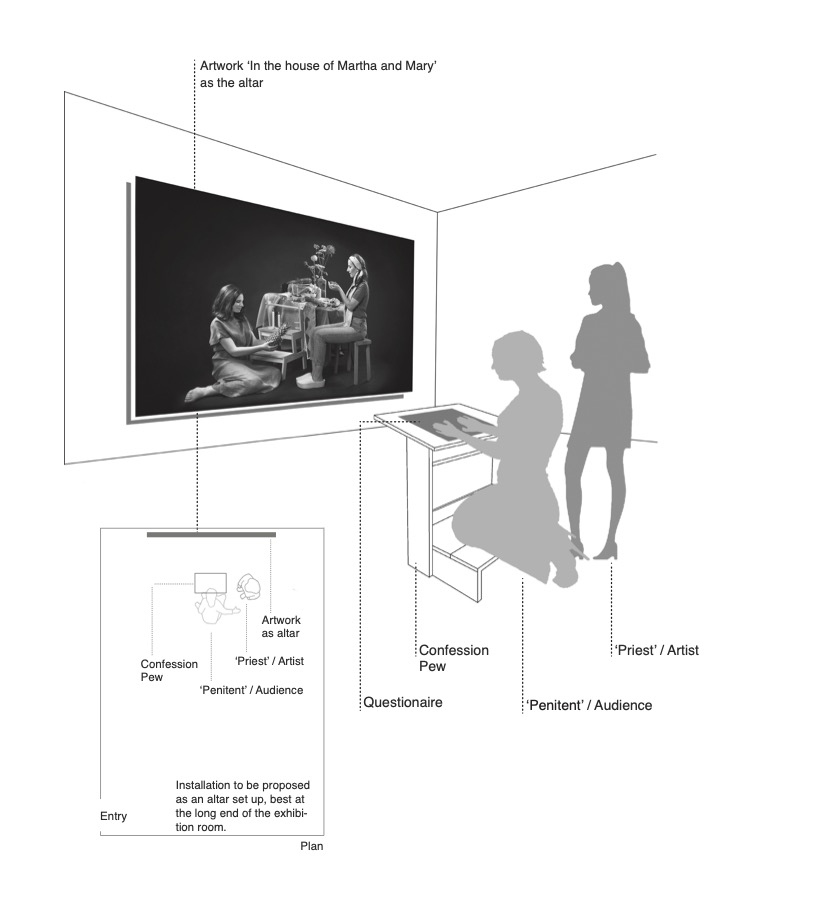Accepted abstract - Creative Tastebuds Symposium 2021
In the house of Martha and Mary
Innovation showcase
By Phyllis Wong, studio pw/, Rotterdam The Netherlands.
‘In the house of Martha and Mary’ is a multi-disciplinary project reflecting our over-consumption of foreign imported food. This unsustainable eating practice can be avoided if we patronise more our own locally or regionally grown supply. By doing so, social issues occurring in foreign grower’s countries due to the high demand from the European market can be prevented.
‘In the house of Martha and Mary’ is firstly a contemporary photographic artwork that is staged and inspired by the 16th century still life paintings ‘Christ in the house of Martha and Mary’ notably painted by Pieter Aertsen and Joachim Beuckelaar. These paintings is adapted from a chapter from St Luke’s Gospel (Luke 10: 38-42). ‘In the house of Martha and Mary’ outlines our indulgence of exotic food imported from foreign countries that creates numerous social and environmental problems. By bringing these food to our plate, it brought about issues concerning conflicts at growers’ countries, drug cartel, deforestation, high carbon footprint etc. It reflects a part of our current day food culture that is unsustainable while at the same time pointing at a biblical reference.
Sitten on the right of this artwork, ‘Martha’ contemplates on a lavish spread of local and seasonal produce widely grown, cultivated and available in the Netherlands and its region. While on the left, ‘Mary’ starstruck and seemingly smiling at an imported pineapple on her hands. This is an allegory to St Luke’s Gospel (Luke 10: 38-42), whereby Mary being fascinated by the presence of Christ and the wisdom of his words during his visit. Hence Mary chose not to help her sister, Martha, who is busy preparing a sumptuous meal in the kitchen for Christ and his disciples. The pun of this comparison is how consumers now have completely devout oneself with the bountiful availability of imported food, very much similar to the belief and loyalty of a religious faith. This work aims to reveal the malfunctioning social issue of ours in an art form. Also, it hopes to act as a consumer reminder while raising awareness about adjusting our tastebuds to help to reduce or omit suffering from our environment and the people near and far.
As the artwork carries biblical reference, the installation of the artwork and innovation showcase aims to reference an altar set up. By mimicking so, the artwork is proposed to be projected at the end wall of the exhibition hall (Figure 2). A contemporary and simplified ‘confession’ pew/stool is placed in front of the artwork. It is designed for the audience to kneel on (like a penitent) to review a questionnaire about their own foreign food consumption. I, the artist and designer behind the ensemble, will assist the audience with the questions, acting loosely as a ‘priest' reviewing a penitent’s confession.
At the end of the confessing experiment, small circular pieces of locally made knækbrød will be handed out to the penitent. These tasters are inspired by altar crackers or hostia given out by the priest after a mass or communion. This edible memorabilia is to suggest a binding understanding of the reflection between the audience and the artist.
This innovation showcase hopes to provoke subtle criticism while giving the audience substantial self-reflection and contemplation. The demand for foreign food, much to the culture of globalisation is commonly practised among us. This convenience has become a big part of our daily lives and we are either not educated about the issues that come with it or have simply overlooked the consequences.

Figure 1: Innovation showcase exhibit and display